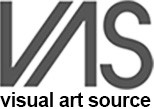An exhibition of new work by Jeremy Thomas will open at Charlotte Jackson Fine Art on August 1 and extend to August 31, with an opening reception on Friday, August 1 from 5-7 p.m. at the gallery, which is located at 554 S. Guadalupe in the Railyard Art District.
Across the floor, up the walls, the steel forms—bloated, bulging, curved—seem to be caught in the midst of their own creation. Ranging in size from massive (several feet across) to quite small (a hefty double-handful) these objects demand attention and invite close inspection.
Ditching the Cardigan provides viewers with an opportunity to get up close to the latest (many never-before-seen) works by Jeremy Thomas. These sculptures, made of mild forged steel inflated with pressurized air, are both constructed and, in some sense, grown. Thomas starts with inscribing basic forms (beginning with the circle, but more recently the forms include ellipses and polygons) onto plates of steel. The steel is cut to shape, and then the flat shapes are folded. Folded pieces of steel are then welded together. And here is where the process gets intriguing—Thomas then inflates these welded forms with air, giving life to the steel and volume to the forms. Having worked with this process for a decade, Thomas has a good idea how the steel in will react. However, there is an element of chance, as the air in interaction with the steel will fold and dimple in ways that cannot be absolutely predicted. Thomas might know a certain kind of fold will appear on one plane, but not precisely how or where along it will manifest.
Like the forms themselves, Thomas’ techniques and process have evolved over the years, but the shift has recently become a bit more radical. The title of the exhibition, Ditching the Cardigan (which came from reading an article about Fred Rodgers), is a reference to pushing against the boundaries of what is comfortable. Thomas’ technique always involved placing his forms in the forge, heating them to upwards of 2000 degrees Fahrenheit, at which point the steel becomes pliable as clay, and then injecting air into them while glowing hot. The technique works well and he still uses it for the smaller pieces, however, Thomas discovered that the larger forms can be inflated cold. This seemingly illogical twist of physics means that Thomas is able to create much larger forms than ever before, while still being able to exploit the potential for elasticity in steel.
Perhaps the most dynamic changes in Thomas’ work have been to the shape, surface, and color of the pieces. Color has always been an essential and somewhat trickster-ish aspect to the work—evoking dichotomies (masculine vs. feminine, organic vs. industrial, decorative vs. art). Originally, Thomas used powder-coated industrial colors specifically chosen from tractor and farm implement manufacturers. Inspired by memories of the abandoned farm equipment he grew up with in the mid-west, the pieces were coated with fetish-finish colors like John Deere Green or Massey Ferguson Red on all but one side, which was covered in a soft rust patina. Thomas later expanded his color vocabulary to include Low-rider and Muscle-car colors, but it was troubles with the powder-coating process which opened up opportunities for his palette.
Thomas used a nickel-plating process and metallic colors, and returned to hand painting (he started out as a painter in art school, so this seems appropriate). Most recently he has begun to use cosmetic colors, specifically nail polishes, to paint his sculptures, as well as to mix his own colors. This has in turn led him to include more rust patina on the pieces—so the balance turns from color to rust on many of the newer works. The new colors are super-saturated, glossy, glittery, and sometimes almost obscene. In these new works the contrast between paint and patina, between color and form is often at once shocking and profoundly intimate. For Thomas, these sculptures are, first and foremost, objects, and the minimalist aesthetic of art as object comes through in them. The return to a more painterly and intuitive use of color (twisting the notion of painting as object to applying painting to object) adds another layer of complexity to this equation.
The other radical shift has been in Thomas’ solution to a problem he has contemplated for a while—how to display the inside of the sculptures while still maintaining the integrity of the piece. The solution was double-inflation. A form is inflated, cut in half, and then welded into another form inside out, and then that new whole is inflated. The finished double-inflated pieces allow the viewer to see both aspects of the inflation process simultaneously. The effect of the pieces is almost haunting, with an ephemeral quality brought to the fore.
Spend time with these objects. Bubblegum pink and “Datsun” green, the swollen purple of a bruise blossom on forms that suggest Neolithic goddesses, mutant insects, biomorphic machines, alien seedpods, or post-apocalyptic flowers. But whatever the connotations the viewer may bring, the work itself works on the viewer, eliciting a visceral reaction that transcends labeling. At its core, Ditching the Cardigan is a confrontation with the very fundamental and mysterious experience of the complexity and simplicity of objects.
For more information about this exhibition please contact 505-989-8688 or press@charlottejackson.com or visit our website: www.charlottejackson.com.


